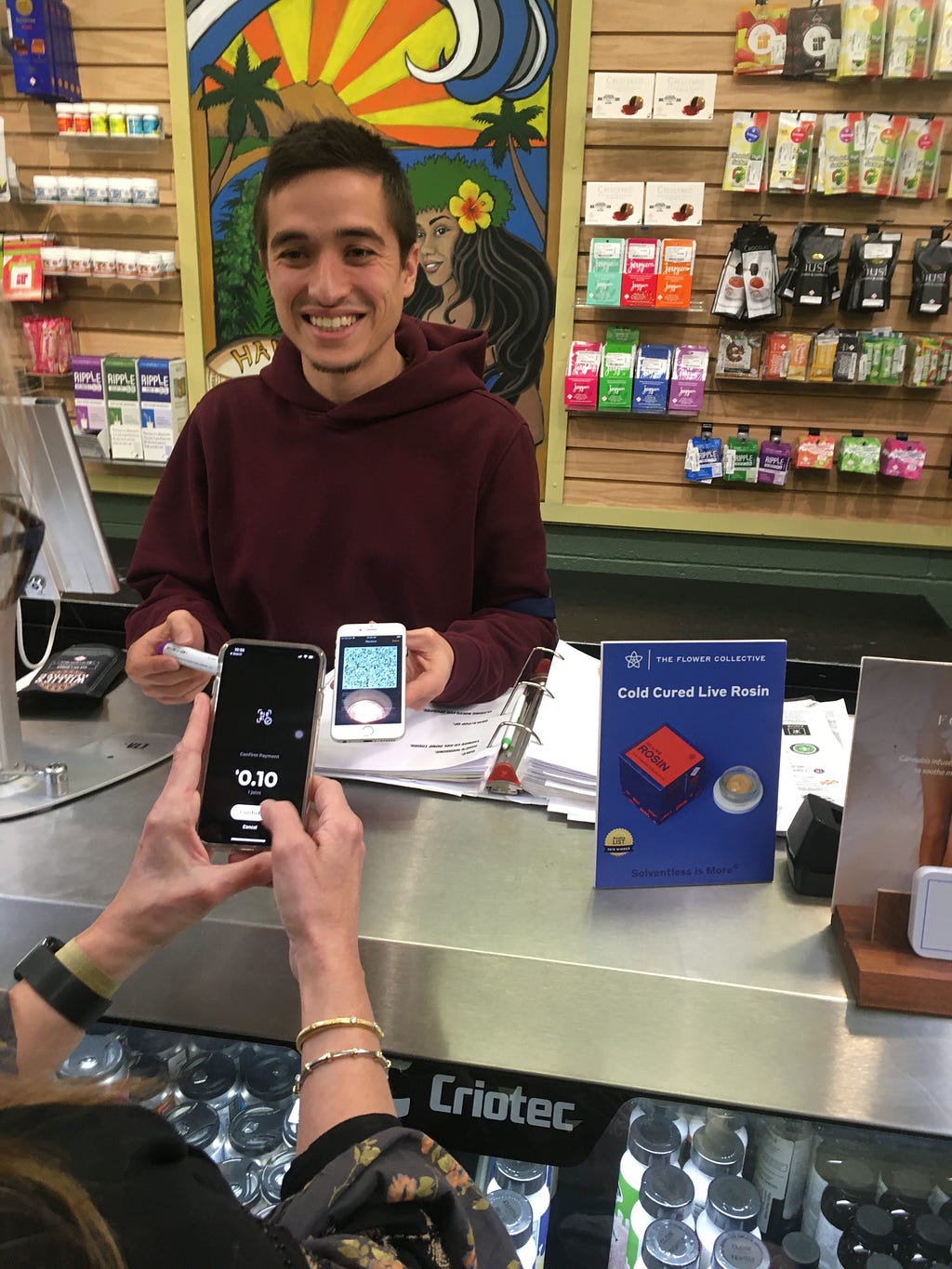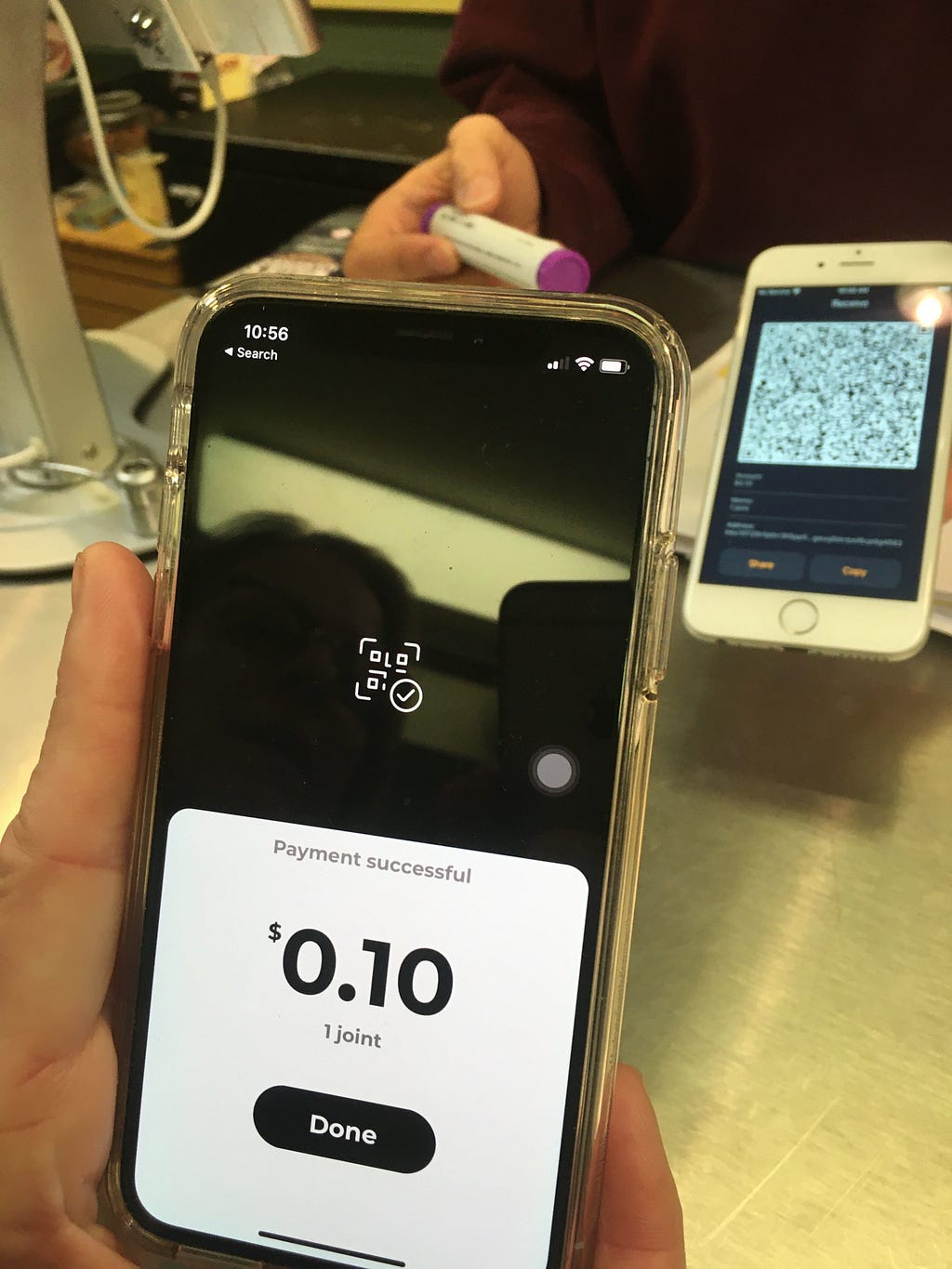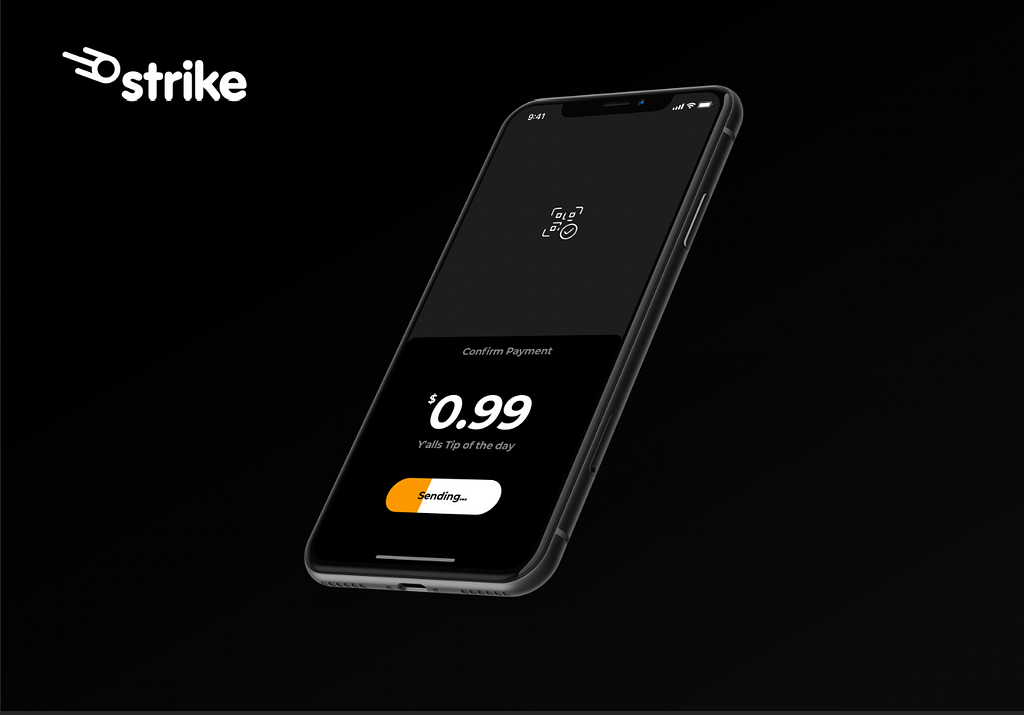Latest news about Bitcoin and all cryptocurrencies. Your daily crypto news habit.
Yo. Today I am thrilled, excited, and incredibly proud to release Zap’s most ambitious product to date. The direct result of years of Bitcoin + Lightning development, countless hours of user research, and intense product iteration all led to this.
Today, we are announcing Strike, an application that allows you to make Lightning payments with your bank account or debit card. Using Strike requires the following: a debit card or bank account. That’s it; no wallet, no node, no channels, no swaps, no liquidity management, no anything. It’s an application, sitting on top of our infrastructure piece Olympus, designed to usher in an era of Bitcoin that we believe has the best shot of achieving our mainstream hopes and desires.
The Story
When describing Zap’s design and product decisions, I’ve frequently described Zap as available in response.
Back in September of 2019, I announced Olympus. Olympus was initially designed as a Lightning-enabled fiat ramp, to allow users to buy bitcoin inside of their existing Zap wallet. It was our answer to how we scale Lightning to millions of users. However, as we tested, tinkered, tried, failed, and most importantly learned, our product evolved. Those four months of intense user research and study inspired the in-house hackathon that birthed Strike. Strike was never the goal or the plan, but rather a response.
Our ideas and assumptions were simple. If we allowed users to instantly buy BTC, delivered over Lightning by using a debit card linked to their Lightning wallet, we would have it solved.
Right? Wrong. As we continued to experiment, we learned very quickly that we were providing the right answer to the wrong question. In my Olympus announcement, I proposed that Olympus solved the following question: How do we get a user onto Lightning with the least amount of friction? However, what Olympus solved was how to get bitcoin onto Lightning with the least friction. We completely missed the user.
So for this blog post, I wanted to walk through our journey and learnings, and introduce our new product and all we have in store for the future. This blog post may be a bit longer than my typical post, but I believe the learnings from our research and the outcome that is Strike is monumental and transformative.
So, without further ado, let’s take a deep dive exploring the tremendous amount of friction involved in getting a user onto Lightning, and the important points that I missed.
Volatility
The first very clear issue was bitcoin’s inherent volatility. Traditionally, bitcoin’s volatility has been seen as a feature. In markets, volatility screams opportunity, and it is bitcoin’s volatility (traditionally to the upside) that has attracted many of its existing users and market participants. One of the more popular value propositions of Bitcoin in its first 11 years of existence is wealth creation. Buying bitcoin, holding bitcoin, and having its value and purchasing power go up as time goes on.
However, in a consumer-merchant setting where people are using bitcoin, volatility is a non-starter. Frequently when testing, users would buy bitcoin delivered over Lightning to their Zap wallet, and shortly after price would move. We ran into a scenario with users where the bitcoin price fluctuated up or down 5% after the initial purchase. This caused the following:
Not spending BTC because it’s appreciating
or
Not spending BTC at a loss because of hopes it would appreciate
Merchants have an entirely different relationship with volatility which makes accepting bitcoin extremely difficult. A typical merchant prices their operations in their denominated fiat currency. A volatile day for bitcoin could throw away months of profit for a given merchant, and the risk-reward profile just wasn’t worth it.
Taxes
In the United States, bitcoin is taxed as property, and spending bitcoin in exchange for any good, service, or currency is a taxable event, plain and simple. Many do not know, but this extends to the Lightning Network and every single Lightning Network payment. Yes, purchase of your Fold and Bitrefill gift cards, your Yalls articles, and your Satoshis Place art are all taxable events that need to be reported to the IRS.
This was a major oversight when designing Olympus. All activity was a taxable event, and this created enormous amounts of overhead for each individual user and for myself. Yes, sats back is nice, but is it worth capital gains tax headaches? In our user research and testing, the answer was no. Users enjoyed micropayments, cross border payments, social tipping, and so on, but did not evaluate it as worth it when taking into account the tax consequences.
As a merchant, this was arguably a bigger issue. Merchants were accepting bitcoin via Lightning, and every now and then converting to fiat to pay operational expenses. The tax headache was not worth it, and nearly all merchants opted out of accepting bitcoin.
The regulatory and tax scene in the United States is a huge impediment to allowing Lightning to be used in mainstream commerce. Imagining a world where millions of people are using Lightning to conduct commerce dies with the introduction of the regulatory and tax scene currently in place. It was a devastating truth to stumble upon, but one that is very much real.
Creating A Wallet, Custody, and Owning Bitcoin
Many of our testers were not as familiar with Bitcoin as many reading this post. If we want millions of mainstream consumers benefiting from Bitcoin and Lightning, surely we should test with that audience in mind.
When asking a given user if they would buy an article for a few pennies, the answer was almost always yes. However, when they were told it required installing a Lightning wallet and buying bitcoin, their answer was no thanks.
I have a few pennies in USD. If that’s not enough for the article, then I don’t care to buy it.
Direct quote.
Setting up a wallet, waiting for something you don’t understand to finish syncing, being limited in your ability by something called “capacity,” and having to buy bitcoin and manage backups was far too much for almost all users. Many of our testers didn’t even get to the point of purchase, it was all a bit overwhelming. That hit me hard. Ok, I get it, volatility and taxes are tough. But you don’t even want to own bitcoin? For fuck’s sake, how am I supposed to allow you to benefit from this technology?
If we look at my Olympus demo, we can see I owned zero bitcoin, and my goal was to pay a Bitrefill QR code.
Did I really need to download a Lightning wallet, write down my seed phrase, back up my channels, and be exposed to tax consequences and volatility to pay the Bitrefill Lightning invoice? I wasn’t using bitcoin to speculate, and I wasn’t using bitcoin for censorship resistance or privacy (as my identity and debit card was linked to my node).
What if my debit card could pay the Lightning invoice? What if by connecting my bank account, I can scan any Lightning invoice, hit pay, and it would work? No wallet, no backups, no channels, no capacity, no custody issues, no volatility, no taxes. What if instead of “spend and replace” it was “buy and spend in seconds without noticing”? What if the few pennies in USD from the above user was enough? What would that look like?
It would look like Strike, that’s what it would look like.
The Product
In order to accomplish this, a debit card or a bank account would need to be interoperable with Bitcoin and the Lightning Network, lowering the barrier of entry into this new economy. Users wouldn’t have to deal with volatility, they wouldn’t have to deal with taxes, they wouldn’t need to set up a wallet to interact with the protocols, and they wouldn’t even need to own bitcoin to scan a Lightning QR code. What if everyone’s bank account could speak Bitcoin?
The jump from Olympus to Strike is quite small, we simply added a few things and removed a few things. Small, simple, totally ordinary and innocuous things.
However, because of the way we are able to integrate them into the environment, they have this decisive impact and become extremely powerful. We aren’t just changing how Bitcoin looks, but also how it feels. We’re changing a consumer’s relationship with Bitcoin and Lightning, how it is used, and how it is viewed. We’re opening up new ambitions, new ideas, new possibilities, and a new, mainstream audience.
We have Strike for iOS, Android, Desktop, and a browser extension. You can view a playlist of demos I put together on my YouTube channel.
What this means
Bank accounts and debit cards can now speak to nodes all over the world, and nodes all over the world can now speak to bank accounts and debit cards. The possibilities are endless and the sky is the limit.
Can Strike be used to buy bitcoin? Sure, create an invoice from your existing wallet and pay it. After completion, you’ll have less fiat in Strike and more bitcoin in your wallet.
Can Strike be used to sell bitcoin? Sure, create a request in Strike and send to it from your wallet. After completion, you’ll have more fiat in Strike and less bitcoin in your wallet.
Can Strike be used for remittance payments? Yes, of course, it can. Just scan the QR code and click pay.
Can Strike be used for internet tipping? Yes, of course, it can. Just scan the QR code and click pay.
Is Strike another custodial wallet? No, not at all. It owns nobody’s coins and nobody’s keys. If BTC is hacked and stolen, it’s my BTC and I’m fucked, nobody else. That’s the way it should be. In a weird way, it’s a beautiful and innovative hybrid.
Strike in the wild
There are real people using Strike today, let me tell you my favorite user story so far.
My family owns a cannabis business in Colorado. In Colorado, there are only a handful of banks in the entire state willing to bank those in the cannabis industry, and the waitlist to be banked by ours is now longer than two years. Our family business struggles to stay banked, operates a security budget to protect and migrate cash in our stores, and we’ve struggled immensely with payment processors.
Those processing payments in the cannabis industry charge between 5%-15%, and are known to be unreliable and unstable. For example, ours was recently down for two months leaving us unable to process any credit/debit card payments. This leaves businesses exposed and allows Strike to provide a level of fault tolerance otherwise missing.
When I visited Colorado for Christmas, I showed my parents Strike. We ran to the store and I demoed it to all of our upper management and employees. My parents were already running a BTCPay Server instance and offered a 10% discount for anyone who paid in BTC, as it was so much easier for us to accept. The problem was, no customer was able to get a Lightning wallet set up to make payments ranging from $0.10–$500. With Strike, this changes immediately. All you need is the app and a debit card.
We passed Strike around to a few frequent customers and family friends, telling them if you use this app, you get a 10% discount. It worked. Customers young and old were using Strike to shop at our store, getting a discount, and helping our business. Do they know what Bitcoin is? I have no idea. Did they know they were using Bitcoin under the hood as a payment rail to transfer and settle value? Absolutely not. Bitcoin was behind the scenes, making a difference and benefiting individual lives and businesses without anyone noticing they were even using it.

 Strike being used at Helping Hands Herbals in Boulder, CO, USA
Strike being used at Helping Hands Herbals in Boulder, CO, USA
The possibilities are endless. What about Twitch streamers and content creators? Content creators can set up a Strike donation page and every time someone donates BTC, they get fiat in their bank account (or whatever custom fiat:BTC ratio they’d like). Magic.
The smallest changes can be transformative, but they have to be the right changes. Discovering what those changes are takes patience, you have to pay attention, you have to be available in response.
The Future
Lightning offers real-time, cheap, and global settlement and self-clearing to the world’s first natively digital asset class. We’ve put in the work to make the barrier of entry low, and the flexibility + ease of use high.
There’s a lot of real-time and automated risk management, trading, compliance and legal policy, application and protocol development to test. As I’ve said before, this is not a race, and we will go at our own pace. However, we do feel ready to expand those helping us test Strike.
So, here is the plan. We will continually widen our BETA every week, and start with US users only, until we feel comfortable opening up usage globally. Our goal is to be in a public BETA and put Strike on App Stores in the coming months. This will take a community effort. A lot of testing, reporting of bugs, feedback on features, and collaboration. If you’d like to join the beta list, you can do so at strike.zaphq.io. If you have a special use case and really want to start testing today, email me at zap@jackmallers.com, I’d love to hear your story and get you a download link.
You all know me, I have big plans. Partnerships to be announced, new products and features, and events I’ll be hosting in Chicago to demonstrate the tech. This is certainly exciting but very much the beginning.
Thanks
Alright, everyone, that’s all I have for today. Not only am I unbelievably excited, but I have a new-found sense of ambition.
To CMT Digital, thank you. The work you continue to do for Bitcoin on the legal, market, trading and compliance side of making these dreams of ours come true is some of the most inspiring work I’ve seen in the space. Colleen and everyone over at CMT maintains a low profile, but it’s important to know that nothing that you’ve seen in the blog post works without their dedication to our shared vision for the future.
I personally would like to shoutout the Zap team. Strike may look simple, but this was the furthest from easy. We went through it all, together. Testing, trying, failing, and repeating. Through it all, we stayed the course and delivered a product we are all so incredibly proud of. We are all lucky to have this group working on Bitcoin and I am the luckiest to be able to spend so much time learning from and supporting this group every day. Hats off, you should be proud. I certainly am.
Lastly, to the community. I was recently brought to tears on my last podcast appearance because of the support you all give me. It feels like I dropped out of college yesterday, and to think we have pulled together the necessary banking partners, trading partners, regulatory partners, written the code, and gotten to this point is beyond me. I love you all like family, and I wish you knew how much I mean that. I think I’ve stumbled upon something really cool here, and I hope to make y’all proud. It’s always love Bitcoin fam ❤️
You can contact me @JackMallers on twitter or zap@jackmallers.com via email. Feel free to join our slack if you’d like to be more interactive with the Zap community or discuss Strike.
As I said above, I’ve got more coming. I’ll talk to you sooner than you think.
Be easy. Peace out 👊 🍻
Disclaimer
The views and opinions expressed in this article are solely those of the authors and do not reflect the views of Bitcoin Insider. Every investment and trading move involves risk - this is especially true for cryptocurrencies given their volatility. We strongly advise our readers to conduct their own research when making a decision.
